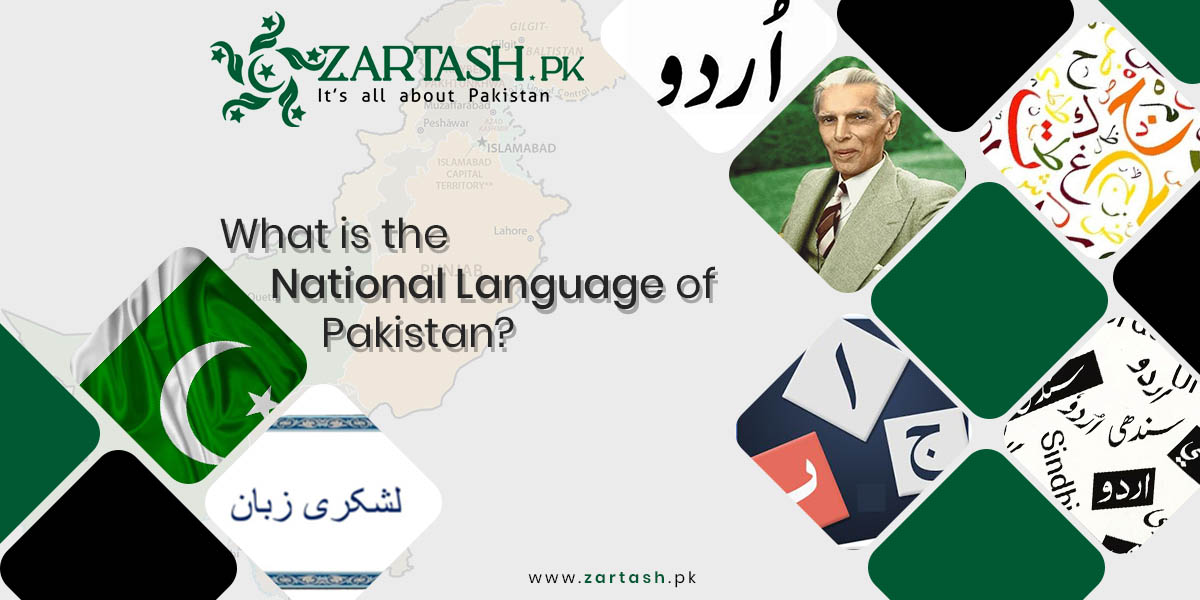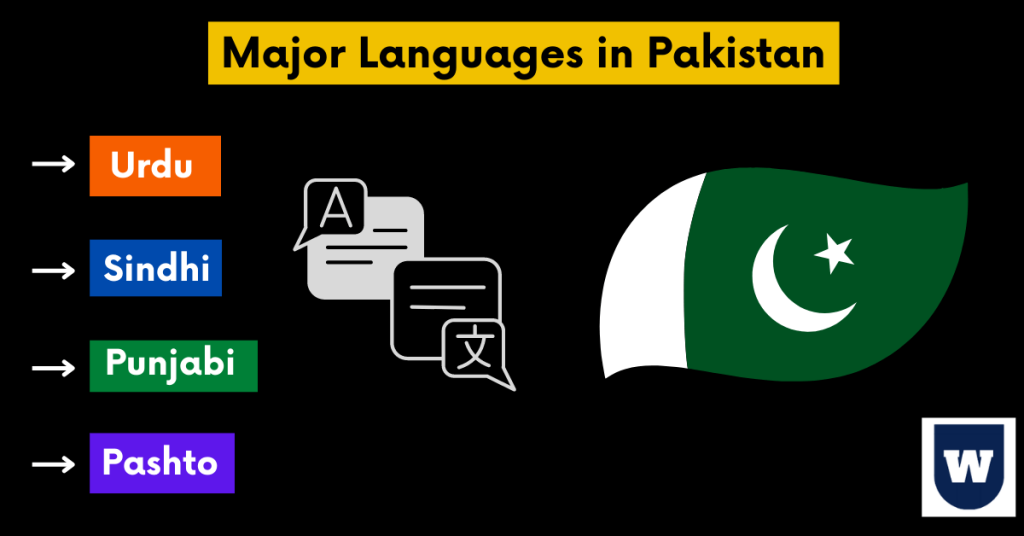National language of pakistan nyt – Urdu, the national language of Pakistan, holds a profound historical and socio-cultural significance in the country. Its adoption as the national language has been a subject of historical evolution, socio-cultural importance, and ongoing challenges and controversies.
This comprehensive exploration delves into the historical context and motivations behind Urdu’s adoption, its role in shaping Pakistani identity and unity, and the complexities surrounding its promotion as the national language.
Historical Evolution of Urdu as Pakistan’s National Language
The adoption of Urdu as the national language of Pakistan was a significant decision influenced by historical, cultural, and political factors. This decision has shaped the linguistic landscape of the country and has had a profound impact on Pakistani society.
Urdu, an Indo-Aryan language with roots in the Khariboli dialect of Hindustani, emerged as a literary language in the 18th century. It gained prominence during the Mughal Empire and became associated with the Muslim elite of northern India. After the partition of India in 1947, Urdu was chosen as the national language of Pakistan, primarily due to its association with the Muslim majority population and its role as a lingua franca during the independence movement.
Factors Influencing the Choice of Urdu
Several factors contributed to the selection of Urdu as the national language:
- Muslim Majority:Urdu was widely spoken by the Muslim population of Pakistan, which constituted the majority of the country’s population at the time of independence.
- Literary Heritage:Urdu had a rich literary tradition and was associated with the cultural identity of the Muslim elite in the region.
- Lingua Franca:Urdu had served as a lingua franca during the independence movement, facilitating communication between different regions of Pakistan.
- Political Symbolism:The adoption of Urdu as the national language was seen as a symbol of the country’s Muslim identity and its separation from India.
Timeline of Key Events, National language of pakistan nyt
The establishment of Urdu as the national language of Pakistan involved a series of key events:
- 1947:Urdu is declared the national language of Pakistan.
- 1956:The Constitution of Pakistan recognizes Urdu and Bengali as the official languages of the country.
- 1973:The Constitution of Pakistan declares Urdu as the sole national language.
- 1985:The Eighth Amendment to the Constitution introduces English as an additional official language.
Today, Urdu remains the national language of Pakistan and is widely used in education, government, media, and literature. It has also influenced the development of other languages spoken in the country, such as Punjabi, Sindhi, and Pashto.
Socio-Cultural Significance of Urdu in Pakistan

Urdu holds a profound cultural and linguistic significance in Pakistani society. It is not merely a language but an embodiment of the nation’s heritage, identity, and unity.
Urdu has played a pivotal role in shaping Pakistan’s literary landscape. Renowned poets and writers, such as Mirza Ghalib, Muhammad Iqbal, and Faiz Ahmed Faiz, have crafted masterpieces in Urdu that have resonated with generations of Pakistanis.
Role in Literature
- Urdu literature is renowned for its lyrical beauty, philosophical depth, and exploration of human emotions.
- It has enriched Pakistani culture with a vast collection of poetry, novels, short stories, and plays.
Influence on Music
- Urdu has significantly influenced Pakistani music, particularly in the genres of ghazal, qawwali, and film music.
- The soulful lyrics and intricate melodies of Urdu songs have captivated audiences both within Pakistan and beyond.
National Identity and Unity
Urdu has played a crucial role in fostering a sense of national identity and unity among Pakistanis. Despite the country’s diverse linguistic landscape, Urdu serves as a common language that binds people from different regions and backgrounds.
It is widely used in education, media, and government, facilitating communication and promoting a shared sense of belonging.
Challenges and Controversies Surrounding Urdu as the National Language

Urdu’s promotion as the national language has faced several challenges. One of the primary obstacles is the linguistic diversity of Pakistan. The country is home to over 60 languages, and Urdu is the native language of only a small percentage of the population.
This has led to resistance and resentment from non-Urdu speaking regions, who feel that their languages and cultures are being marginalized.Another challenge is the lack of widespread proficiency in Urdu. While it is the official language, many Pakistanis are not fluent in it.
This creates communication barriers and hinders the effective implementation of Urdu as the national language.
Controversies and Debates
The imposition of Urdu on non-Urdu speaking regions has been a source of controversy and debate. Critics argue that this policy has led to linguistic discrimination and has stifled the development of regional languages. They call for a more inclusive language policy that recognizes and promotes the linguistic diversity of Pakistan.
Efforts to Address Linguistic Diversity
Recognizing the challenges and controversies surrounding Urdu, the government of Pakistan has made efforts to address linguistic diversity and promote multilingualism. These efforts include:
- The establishment of the National Language Authority (NLA) to promote the development and use of Urdu.
- The inclusion of regional languages in the educational curriculum.
- The provision of government services in multiple languages.
Despite these efforts, the debate over Urdu as the national language continues. It remains a complex and sensitive issue that requires ongoing dialogue and consensus-building.
Role of Urdu in Education and Media
Urdu holds a significant position in the educational landscape of Pakistan. It serves as a medium of instruction in schools and universities, facilitating the dissemination of knowledge and fostering intellectual growth.
Urdu has played a pivotal role in shaping the national curriculum and educational system. It enables students to engage with their cultural heritage and develop a deep understanding of their history and traditions.
Use of Urdu in Schools and Universities
In schools, Urdu is widely used as a medium of instruction from primary to secondary levels. It is the primary language for teaching subjects such as language arts, social studies, and Islamic studies. This allows students to acquire literacy skills in their native language and develop a strong foundation for further academic pursuits.
At the university level, Urdu is offered as a major subject of study in departments of language and literature. It is also used as a medium of instruction in certain disciplines, such as history, sociology, and Islamic studies. This enables students to specialize in Urdu language and literature and pursue careers in fields related to language and communication.
Role of Urdu in Media
Urdu plays a crucial role in the media landscape of Pakistan. It is the primary language used in print, broadcast, and digital media, reaching a vast audience across the country.
Print Media
Urdu newspapers and magazines are widely read in Pakistan, providing news, information, and entertainment to a large segment of the population. These publications cover a range of topics, including politics, current events, social issues, and cultural affairs.
Broadcast Media
Urdu is the dominant language used on television and radio in Pakistan. News channels, entertainment programs, and dramas are primarily broadcast in Urdu, making them accessible to a broad audience.
Digital Media
In the digital age, Urdu has become increasingly prominent on the internet and social media. Urdu-language websites, blogs, and social media pages cater to a growing online audience, providing news, information, and entertainment in their native language.
Comparative Analysis of Urdu and Other Languages in Pakistan
Pakistan is a multilingual country with a rich linguistic diversity. Urdu, the national language, coexists with several other major languages, each with its own geographic distribution, number of speakers, and official status. This section compares Urdu with other prominent languages in Pakistan, examining their linguistic similarities and differences, and exploring areas of convergence and divergence in their use and promotion.
Geographic Distribution and Number of Speakers
Urdu is primarily spoken in urban centers and among the educated elite in Pakistan. It is the native language of approximately 7% of the population, concentrated in the provinces of Sindh, Punjab, and Azad Kashmir. Other major languages include Punjabi (44.15%), Sindhi (12.19%), Pashto (15.42%), Balochi (3.57%), and Saraiki (10.53%). These languages are spoken in different regions of Pakistan, with Punjabi being the most widely spoken in the Punjab province, Sindhi in Sindh, Pashto in Khyber Pakhtunkhwa, and Balochi in Balochistan.
Official Status
Urdu is the official language of Pakistan, along with English. It is used in government, education, and the media. However, other languages also enjoy official status in their respective provinces. For example, Punjabi is the official language of Punjab, Sindhi of Sindh, Pashto of Khyber Pakhtunkhwa, and Balochi of Balochistan.
This recognition reflects the linguistic diversity of Pakistan and the importance of preserving and promoting regional languages.
Linguistic Similarities and Differences
Urdu, Punjabi, Sindhi, and Saraiki belong to the Indo-Aryan branch of the Indo-European language family, sharing many grammatical features and vocabulary. However, they also exhibit distinct differences in pronunciation, syntax, and vocabulary. Urdu has been heavily influenced by Persian and Arabic, resulting in a richer vocabulary and a more complex grammar compared to other Pakistani languages.
Punjabi, on the other hand, has a simpler grammar and a more colloquial style, while Sindhi and Saraiki have unique phonetic and grammatical features.
Areas of Convergence and Divergence
There are areas of convergence in the use and promotion of different languages in Pakistan. Urdu is the lingua franca used for communication between speakers of different regional languages. It is also the language of national unity and identity, symbolizing the shared cultural heritage of Pakistanis.
However, there are also areas of divergence, with regional languages playing a dominant role in local politics, education, and cultural expression. This diversity reflects the complex linguistic landscape of Pakistan and the importance of preserving and promoting all languages.
Conclusive Thoughts: National Language Of Pakistan Nyt

In conclusion, Urdu’s journey as Pakistan’s national language has been a complex and multifaceted one. While it has played a vital role in fostering national unity and cultural expression, it has also faced challenges and controversies. The ongoing efforts to promote linguistic diversity and multilingualism in Pakistan highlight the country’s commitment to preserving its linguistic heritage while embracing the dynamic nature of language and identity.
Query Resolution
What factors influenced the choice of Urdu as Pakistan’s national language?
The choice of Urdu as the national language was influenced by its historical association with the Muslim elite, its widespread use in literature and poetry, and its perceived ability to foster national unity.
What are the challenges faced in promoting Urdu as the national language?
Challenges include resistance from non-Urdu speaking regions, the need to balance linguistic diversity, and the ongoing debate over the imposition of Urdu on non-native speakers.